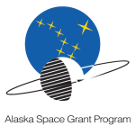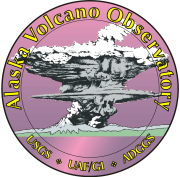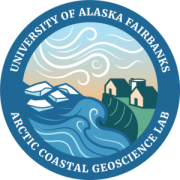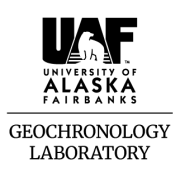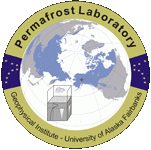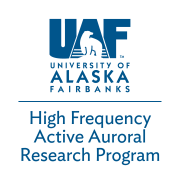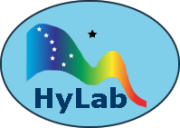Advanced Instrumentation Laboratory (AIL)
The UAF Advanced Instrumentation Laboratory (AIL) in the Geophysical Institute is a world-class, multi-instrument facility supporting the University of Alaska educational mission and Arctic research, industry, and governmental agencies. AIL houses a diverse suite of high-quality analytical instrumentation with extensive applications in geosciences, chemistry, biology/marine biology, environmental science, engineering, fisheries science and archeology. AIL is the only analytical and educational facility of its kind in Alaska. Instruments in AIL supply specialized electron microscopy (EPMA and ESEM), elemental (EPMA, XRF, and FTiR), and structural (XRD) analysis of a wide range of liquid and solid materials at spatial scales from the centimeter to the sub-micrometer, and serve a broad range of Alaska and Arctic research and educational needs. AIL analyses also help guide state and federal regulatory agencies.
Alaska Center for Unmanned Aircraft Systems Integration (ACUASI)
The mission of the Alaska Center for Unmanned Aircraft Systems Integration (ACUASI) is to maintain a world-class research center for unmanned aircraft systems, providing integration of unique payloads and supporting pathfinder missions within government and science communities, with a special emphasis on the Arctic and sub-Arctic regions.
Alaska Climate Research Center (ACRC)
The primary mission of the Alaska Climate Research Center (ACRC) is to respond to inquiries concerning the meteorology and climatology of Alaska from public, private and government agencies and from researchers around the world. The center provides services within the three-tiered system (state, regional and federal).
Alaska Critical Minerals Collaborative (ACMC)
UAF’s Alaska Critical Minerals Collaborative (ACMC) facilitates research across the University of Alaska with industry, agency and academic partners. Initially housed within the Geophysical Institute, it is a collaboration between university faculty, staff, and labs to conduct critical mineral research that positively impacts the state’s economy and society.
Alaska Earthquake Center (AEC)
The Alaska Earthquake Center (AEC) is dedicated to reducing the impacts of earthquakes, tsunamis and volcanic eruptions in Alaska. AEC provides definitive earthquake information to the public, emergency managers, scientists and engineers. This information is derived from the network of seismic monitoring stations AEC operates and monitors across the state.
Alaska Satellite Facility (ASF)
The mission of the Alaska Satellite Facility (ASF) is to make remote-sensing data accessible. ASF distributes remote-sensing data to scientific users around the world and promotes the advancement of remote sensing to support national and international Earth science research.
Alaska Space Grant Program (ASGP)
The Alaska Space Grant Program (ASGP) is a consortium of public and private universities and nonprofit organizations that sponsors a broad range of programs to enhance teaching, research and educational outreach within aerospace, earth science and other NASA-related STEM disciplines throughout Alaska.
Alaska Volcano Observatory (AVO)
The Alaska Volcano Observatory (AVO) is a joint program of the United States Geological Survey (USGS), the Geophysical Institute of the University of Alaska Fairbanks (UAFGI), and the State of Alaska Division of Geological and Geophysical Surveys (ADGGS). AVO was formed in 1988 and uses federal, state and university resources to monitor and study Alaska's hazardous volcanoes, predict and record eruptive activity, and mitigate volcanic hazards to life and property.
Arctic Coastal Geoscience Lab (ACGL)
The Arctic Coastal Geoscience Lab (ACGL) research projects includes applying geospatial and topographic survey techniques to conduct coastal hazard assessments in remote coastal villages, implementing community-based erosion monitoring programs, and developing sediment derived paleo-proxy records of ancient environmental conditions. We strive to integrate research with education through the mentoring of student interns, K-12 education programs, and citizen-science training. Through these combined activities, we seek to advance knowledge in regards to Alaska’s coastlines and provide its residents applied data products that inform local planning and decision-making.
College International Geophysical Observatory (CIGO)
The Jack Townshend College International Geophysical Observatory (CIGO) is a network of eight state-of-the-art facilities that collect geomagnetic, seismic and geophysical data to support research at the Geophysical Institute, the International Arctic Research Center and the U.S. Geological Survey as well as other national and international organizations. The site is situated northwest of Smith Lake behind the UAF campus.
Geochronology Laboratory (Geochron Lab)
The Geochronology Laboratory measures the ages of rocks and minerals using the 40Ar/39Ar method. This facility accepts analysis requests from researchers, state and federal agencies, and industry.
Geographic Information Network of Alaska (GINA)
The Geographic Information Network of Alaska (GINA) is the University of Alaska’s mechanism for organizing and sharing its diverse data and technological capabilities among the Alaska, Arctic and world communities.
Geophysical Institute Permafrost Laboratory (GIPL)
The Permafrost Laboratory deals with scientific questions related to the circumpolar permafrost dynamics and feedbacks between permafrost and global change. At the Permafrost Laboratory, data related to the thermal and structural state of circumpolar permafrost is collected and analyzed. The focus of our research is the development of methods to physically and mathematically model permafrost interactions with the climate system (permafrost modeling), the study of naturally and human induced disturbances of permafrost (permafrost process studies), the detection of changes in permafrost temperature, thickness, and distribution over time (permafrost monitoring), and the prediction of impacts of permafrost changes on the natural environment (e.g. ecosystems, hydrology, carbon cycle) as well as human-related concerns (e.g. infrastructure). We are interested in all aspects of how permafrost is affected by global change with respect to climate as well as natural and human induced disturbances. The Permafrost Lab was established in the 1960s by Professor Thomas E. Osterkamp at the Geophysical Institute of the University of Alaska Fairbanks.
High-frequency Active Auroral Research Program (HAARP)
The High-frequency Active Auroral Research Program (HAARP) is a scientific endeavor aimed at studying the properties and behavior of the ionosphere. Operation of the research facility was transferred from the U.S. Air Force to the University of Alaska Fairbanks on Aug. 11, 2015, allowing HAARP to continue with exploration of ionospheric phenomenology via a land-use cooperative research and development agreement.
Hyperspectral Imaging Laboratory (HyLab)
The Hyperspectral Imaging Laboratory (HyLab) was established to provide a much needed capability for hyperspectral imaging in the State of Alaska supporting science, applications, and education. Hyperspectral imaging, also known as imaging spectroscopy, is an advanced remote sensing technology that helps researchers to measure rather than simply observe from a distance. The technology uses sophisticated sensors that can scan and generate hundreds of images of any target material on the surface of the Earth.
Lidar Research Laboratory (LRL)
The Lidar Research Laboratory (LRL) studies the Arctic middle and upper atmosphere with the goal of better understanding weather, climate, and space weather and the ocean and inland waters to improve our knowledge of aquatic ecosystems. Our research is primarily based on lidar observations that we make at Poker Flat Research Range, system development at the GI Space and Atmosphere Instrumentation Laboratory (GI-SAIL) at the Elvey Building on the Troth Yeddha’ campus, and lidar and passive imaging studies of the ocean and lakes that we make from boats, drones, and planes.
Poker Flat Research Range (PFRR)
Poker Flat Research Range (PFRR) is the largest land-based rocket research range in the world and the only high-latitude rocket range in the United States. Poker Flat launches scientific sounding rockets and tracks satellites.
Wilson Alaska Technical Center (WATC)
The Wilson Alaska Technical Center (WATC) was created to recognize the accomplishments and growing stature of nuclear treaty monitoring support programs at the Geophysical Institute of the University of Alaska Fairbanks. Establishment of the center provides the necessary structure, visibility and support to better serve our customers in nuclear treaty verification across the spectrum, from basic research to operations and maintenance.







